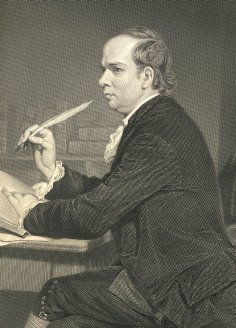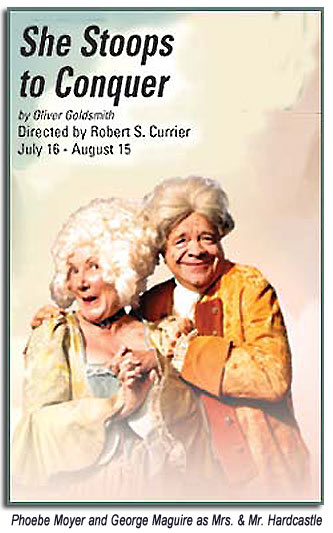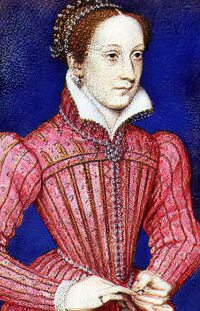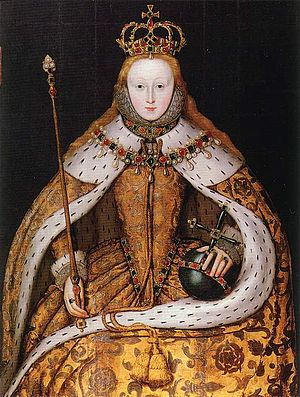Well, I’ve had a pretty good week! I wrote those wondrous words The End on my Sicilian WIP (it still needs some rough edges polished before it flies off, but the hardest part is done! No Hello Kitty whips needed, Megan). I started a new day job with more time for writing and more money (a winning combo, IMO). And I got a big box of new books from the Edward R. Hamilton catalog. Joy!
Now, after last week’s birthday post for Marie Antoinette, you might have noticed I’ve been spending some time on
historyorb.com This is a great site with info on historical birthdays and happenings for every day of the year. So, whenever I’m having a hard time coming up with topics for Saturdays, I can turn here. Like today!

There are two November 10 birthdays with significance for “our” period (it’s also the birthday of the Earl of Essex, but I stuck with the 18th century)–William Hogarth and Oliver Goldsmith. Hogarth was a painter, printmaker, satirist, and social critic born in 1697, living until 1764. The son of a poor school teacher, he was born in London and apprenticed to an engraver in Leicester Fields, London as a boy. He took an avid interest in sketching the street life of the city, and was well-acquainted with the seamier side of 18th century life (his own father was imprisoned in the Fleet for debt for five years, something Hogarth never talked about). In 1729, he married the daughter of a fellow artist. In 1757, he was appointed Serjeant Painter To The King.

In 1731, he completed the earliest of his famous series of moral works, The Harlot’s Progress (the paintings are now lost, but the engravings still exist). In six scenes, it shows the miserable fate of a country girl lured into prostitution. The next series, The Rake’s Progress, follows in eight paintings the reckless life of Tom Rakewell, the son of a rich merchant who wastes his money and dies in Bedlam. (These paintings are now in a gallery room at Sir John Soane’s Museum, where Diane and I actually got to see them!)

in 1743-45, he painted the six works of Marriage a la Mode, a skewering of upper-class society that warned of the miserable tragedy of marrying for money. It shows the fashionable marriage of the son of bankrupt Earl Squanderfield to the daughter of a rich merchant, and ends with murder and suicide. (If it was a romance novel, which the initial set-up suggests it could be, things would have ended far better…)

His later important cycle was Beer Street and Gin Lane, pieces I find endlessly fascinating in their details! Beer Street has happy occupants, drinking the good, healthy beverage of English beer, versus Gin Lane, which causes serious troubles (like babies tossed over railings!).
Hogarth died in London, and was buried in St. Nicholas’s Churchyard, Chiswick. His friend, the actor David Garrick, wrote the inscription.

Oliver Goldsmith, playwright, poet, and physician, was born in 1730 in Ireland, the son of an Anglican curate. He earned his Bachelor of Arts from Trinity College in 1749, studying theology and law but never being ordained. He later studied medicine in Edinburgh, Leiden, and Padua, returning to London to work as an apothecary’s assistant. He earned extra money as a hack writer, but also worked on more serious poems and became friends with Samuel Johnson, with whom he was a founding member of the “The Club.” His great literary work combined with a dissolute lifestyle led to Horace Walpole nicknaming him “The Inspired Idiot” (not a nickname I covet…). He died in 1774 and was buried in Temple Church. There is also a memorial in Westminster Abbey with an epitaph written by Johnson.
His best known works include the novel The Vicar of Wakefield (1766), the pastoral poem The Deserted Village (1770), and his plays The Good Natur’d Man (1768) and She Stoops to Conquer (1771, first performed in 1773). I’m especially fond of She Stoops to Conquer, since I got to take part in a production when I was in college! It’s a farce and romantic comedy of errors, initially titled the appropriate Mistakes of a Night.

The central plot follows Charles Marlow, a wealthy young man being forced to marry a woman he’s never met. He’s very shy around women of his own class, but with females of the lower orders he suddenly turns into a lecherous rogue. He sets out to the lady’s family home, Hardcastle Manor, with his friend George Hastings, who is an admirer of Constance Neville, a relative of Kate, the bride-to-be. They get lost on the journey and stop at a tavern for directions. Tony Lumpkin (the bride’s kinsman) comes across them there, and decides to play a practical joke by telling them they are a long way from the Manor and must pass the night at an inn. The “inn” is really Hardcastle Manor, though the two men are too dumb to realize that and behave scandalously!
Kate, meanwhile, disguises herself as a maidservant in order to get to know her might-be fiance. Marlow, of course, falls in love with her, but because she seems to be a maid behaves in a very shocking manner around her. But all misunderstandings are resolved in the end, and everyone lives happily ever after. (I, btw, played Constance, a young lady who is heiress to a vast fortune in jewels. She loves George, who loves her in return, but she is promised to her cousin Tony. She attempts to elope with her true love in one of the many follies in the play!)
So, two more birthdays! Bring out the cake! What are your plans for the weekend (besides celebrating, of course?) I plan to start reading one of my new books as a reward for finishing my WIP, and for writing this post.































